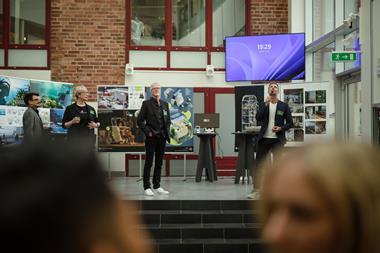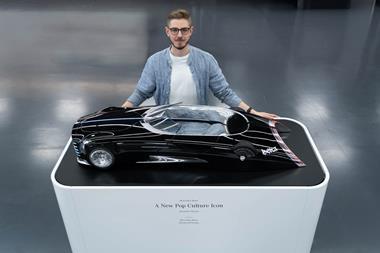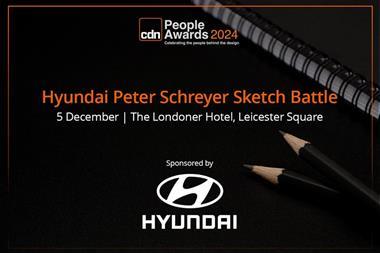TIE - Targeted Interior Environment
Thomas Woods (UK)
Many buyers subscribe to lifestyle stereotypes whether through their actions or aspirations. For example, when a customer looks to buy a C-segment car they are able to choose from a wide range of body styles.
Customers with different requirements choose different body styles. With the cost based trend toward carry over components there is a real danger that the buyer faces a choice devoid of character and individuality. Instead of one interior to fit all, the buyer is offered a choice of themes more relevant to how they use their vehicle. The TIE Concept gives customers a choice of interior.
Volvo CTP - Connected Transportation Product
Jarno Sundell (Norway). In cooperation with Volvo Car Corporation.
CTP is an open-top two-seater designed for the growing urban landscape and for a generation shaped by the hours spent with information technology. The design examines how issues such as coming trends, new technology and social changes will affect the future identity of Volvo. The vehicle is digital connected with the user and the world around it to meet the users demand for a totally product that incorporates other functionalities besides driving. This is communicated through a design language that put the individual in focus, tweaking Volvos family-centered design philosophy.
Citroen FC Photovoltaic
Magnus Gordom (Sweden)
The project idea comes from the space industry and the technologies that have been important components in the space program since the 1950s. Solar cells, fuel cells, carbon fibre and advanced accumulators have been too expensive and too poor to be used by other branches, until now. Today, that technology has reached a level and cost that makes it possible to be adopted by the car industry. The Citroen FC Photovoltaic is a future concept for the year 2020.
Volkswagen Neptun
Christian Krug (Austria). In cooperation with Magna Steyr.
Neptun is a desirable 4WD off-roader for the near future, 20 cm smaller than a Golf, using hybrid technology for moving on land and water. A split line kicking up at the rear divides the upper part from the lower part. Above this waterline there are the intakes, front and rear lights, together with the VW emblem. Both compositions keep a clear and functional Volkswagen design language. Water rails on the bottom part and a rubber colour give an amphibious character to the lower part, the hull of the car. The customer group could consist of lifestyle orientated people, who want to be different or specialist users suchas UN, Red Cross and emerghency services.
The education at Umea Institute of Design is characterised by strong cooperation with both local and foreign industry. In addition to support during the thesis work, the students participate in several sponsored projects during the Masters Programme. Experienced tutors and a strong commitment within the Swedish automotive industry to educate better vehicle designers have helped to boost each years students results. Cooperation partners have included: Volvo Car Corporation, Volvo Trucks, Scania, SAAB, Komatsu Construction Equipment, Toyota Corporation, Nokia, Sony Ericsson, ABB, and Microsoft Corporation
Umea students are finding increasing opportunities to extend their training on overseas internship programmes with Toyota Group (Japan), DaimlerChrysler (Germany), GM Europe (Germany), IDEO (USA), Kiska Design (Austria) among others. The combination of a strong selection process, high quality education and small classes have helped to generate the impressive figure of 95% employed graduates within six months following the programme conclusion every year.
The school is expanding in several areas. Two new courses were recently added: Introduction to Industrial Design, and Advanced Visualisation and Animation (both with a 1 year duration). Construction is almost completed on a major building extension which will offer over 30% more space for staff, researchers and students. This will provide new classrooms, new workshops, new social areas, new working places for staff and researchers. Facilities will include a full scale 5-axis Kolb milling and scanning equipment (as used by Volvo Cars and BMW). The school's intention is to provide unique and modern automotive modelling education.
With its location in the small city of Umea in the north of Sweden, a high proportion of international students, small numbers (total of 120 students divided into 11 classes), 24-hour access to the studios, and support from the local community, the school has a unique and friendly atmosphere.
In addition to being ranked as the best industrial design education in Sweden, students from the school have had quite a successful performance in recent international automotive design competitions such as the Interior Motives Student Design Awards, Motor Trend competition,and Michelin Challenge Design.
Umea Institute of Design website: http://www.dh.umu.se/
Related stories:
Umea Institute of Design Degree Show 2004















































